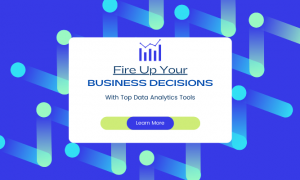Data analytics is way older than big data. And as long as you are not dealing with the amount of data that qualifies as big data, Excel can be your best friend. Marketers have a cute tendency of complicating simple things and over simplifying things that are potentially complicated.
Know more: What Is Augmented Analytics?
This has led to the belief that data analytics is an uber hard domain of knowledge that requires fancy tools and futuristic skills.
Well, do not take my word but you will realize over the years that I am right when I say that Microsoft Excel skills are all you are going to need for a pretty big chunk of your analytics tasks.
Excel has some pretty cool functions that can add great value to business intelligence as well as analytics efforts.
Let us take a look at 5 features of Excel.
1. IF()
It is one of those functions which saves you a great deal of hard work. The principle is pretty simple. This enables conditional formulae which change the way of calculation depending on certain conditions. For instance, if you want to mark certain products as profitable or non-profitable depending on the sales records, you can use the IF() function.
See more: How to Move Mailbox from Zimbra to Office 365?
2. Trim()
Cleaning textual data is a challenge because it often comes with blank spaces before or after. If you do not get rid of those spaces they will feature as separate entries. You do not want that sort of inconvenience. Trim() is your solution. This helps you get rid of those white spaces.
3. Filter and Sort
These are fairly common features used regularly by marketers as well as analysts. Suppose you are dealing with a bunch of keywords and you want to find out the ones with the highest conversion rate, these are the functions you want to use.
Check this: How to Repair and Open Corrupt Word File?
4. Logic Functions
This is where a lot of us got lost back in high school. Logic functions are said to be complicated. But if you think about it, logic functions are only as complex as you make it. It can be used for very simple tasks too, for instance, you can ask Excel to sum up the values of products which have sold less than 100 copies.
Read more: Solve OST File Won’t Open in Outlook 2016 Problem
5. Pivot Tables
Pivot tables help you turn information into inferences. Suppose you have your company’s sales records from the previous year. A Pivot Table can help you understand and visualize the sales in each region each week, or whatever parameters you want to set.
Some of these features are quite easy to use, some need practise and some training. Attaining Microsoft Excel training in Malaysia before you venture further into data analytics or business intelligence is a good idea.






Leave a comment